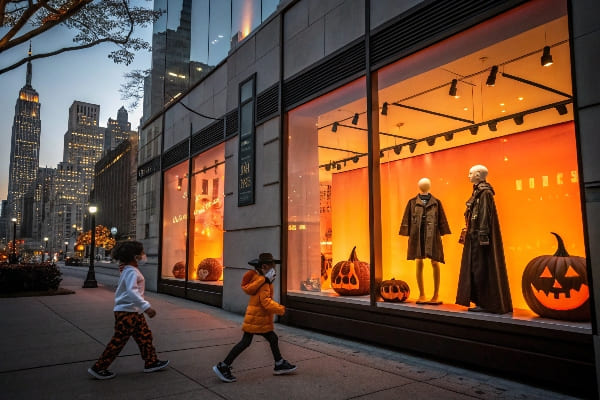Retail floors move fast. Customers return, seasons change, and products rotate. I often find my cardboard displays aging before my eyes. That pressure sparks the question.
Replace temporary displays every four to six weeks or whenever the message loses relevance, stock changes, or visible wear appears, whichever comes first.

I will break down the timing, practice, and upkeep that keep temporary displays earning their keep.
What is a temporary display?
Shoppers rarely look for long. I must grab them with a stand that lives only as long as the promotion. Those short-term stands are what retailers call temporary displays.
A temporary display is a lightweight, cost-friendly fixture—often cardboard—designed to hold products for a limited campaign, then be removed without altering the permanent store layout.

Key traits and strategic uses
Retailers choose temporary displays1 when speed and flexibility matter. I cut and print corrugated sheets, fold them into shape, slide in product, and wheel the unit onto the floor the same week. The light weight keeps freight low and setup easy for store staff. Because the material is printed in full color, marketing teams can match seasonal art without repainting fixtures. When the promotion ends, the display can be flattened and recycled. That eco-friendly exit2 pleases both finance and sustainability teams.
I often tell prospective buyers like David from Barnett Outdoors that a temporary unit is the retail version of a pop-up ad—quick to launch, quick to vanish. His crossbow launches peak in early fall, so a fall-themed stand needs to retire before holiday gift colors take over. Trying to stretch it past that date risks visual fatigue and lost shopper attention.
| Feature | Temporary Display | Permanent Fixture |
|---|---|---|
| Expected life | 4–12 weeks | 1–5 years |
| Core material | Cardboard or foam board | Metal, MDF, acrylic |
| Cost per unit | Low | High |
| Moveable | Yes, one person can lift | Often fixed to floor |
| Recycling | Easy | Rare |
Seasonal speed is the prime reason I keep three production lines busy. While design work and prototyping cost me upfront, repeat orders repay the effort through steady reprints each quarter.
How often should window displays be changed?
Window glass acts like a stage. Passers-by expect a new scene each time they stroll by. Leave one up too long and they quit looking.
Change window displays every four to eight weeks, aligning the refresh with product drops, holidays, or local events to keep foot traffic curious and engaged.

Timing windows to customer cycles
My own rule of thumb mirrors the calendar. In North America the retail year splits into eight natural segments: New Year, Valentine’s, Spring, Mother’s Day, Summer, Back-to-School, Fall, and Holidays. Each slot lasts four to six weeks. When I design a cardboard window prop, I already mark the tear-down date on the job bag. Staff can then schedule removal before dust settles.
Several factors can shorten the cycle:
- Stock turns quickly.3 If the hero product sells out in two weeks, keeping its empty box in the window frustrates shoppers.
- Weather shifts abruptly. A sudden heat wave can make a winter-themed arch feel out of place overnight.
- Local news hooks. A city marathon may warrant a weekend-only window around sports drinks.
| Trigger | Action | Typical Lead Time |
|---|---|---|
| Product launch | Install new theme | 1 week before |
| Seasonal event4 | Swap graphics | On event start |
| Stock sell-through | Remove or refill | Same day |
| Wear and tear5 | Repair or replace | Within 24 h |
I tell clients that window glass is rented attention. Pay the rent by refreshing often or lose the view to brighter neighbors.
What is it called when you set up store displays?
Store staff move fixtures, arrange goods, and adjust lighting. That whole task bundle carries a name rooted in classic retail.
Setting up store displays is called visual merchandising.

Roles, skills, and measurable impact
Visual merchandising joins art with commerce. When I lead a rollout, I wear two hats: designer and salesman. I map shopper sightlines, then translate brand stories6 into tangible shapes. The process breaks into four steps:
- Concept. Marketing sets goals—clear inventory, launch new flavor, or raise brand recall.
- Prototype. My team builds scale models in white cardboard to test size and strength. We ship samples to buyers like David, who push limits by loading crossbows until the board creaks.
- Installation. Merchandisers assemble units in store. Good instructions and pre-glued tabs cut setup time from hours to minutes.
- Audit. Regional managers photograph finished layouts. They compare against planograms and flag deviations.
| Step | Key People | Typical Tools |
|---|---|---|
| Concept | Marketing, designer | Mood boards, sales data |
| Prototype | Engineer, supplier | CAD, load tests |
| Installation | In-store team | Allen key, planogram |
| Audit | Manager, brand rep | App for photos, checklists |
Effective visual merchandising7 can lift sales double digits8 during a campaign. I saw a fishing-lure client jump 27 % in six weeks after swapping plain pegs for a printed waterfall rack that matched lake colors.
Why is it important to maintain displays?
A display that sags, fades, or gathers dust does more harm than good. It whispers that the brand stopped caring.
Well-maintained displays protect brand image, prevent product damage, and preserve sales by presenting merchandise in its best light every shopping day.

Risks of neglect and rewards of upkeep
Cardboard can survive months if treated right, yet I have walked into stores where soda leaks soaked the base, turning corners soft. That sight killed any chance of impulse purchase. When a hunter sees a bent crossbow arm on display, trust drops.
Maintenance covers four zones:
1. Structural integrity
Check joints, shelves, and hooks. Replace any panel that bows beyond 5 mm.
2. Cleanliness
Wipe surfaces daily. Grease or fingerprints dull print gloss.
3. Stock level
Keep facings full. Empty slots imply low demand or poor service.
4. Graphics freshness
Sunlight fades ink. Rotate sides or swap new prints before colors shift.
| Maintenance Item | Frequency | Responsible Party |
|---|---|---|
| Wipe with dry cloth | Daily | Store associate |
| Restock product | Twice daily | Department lead |
| Inspect joints | Weekly | Merchandiser |
| Replace graphics | Monthly | Supplier / brand |
I include a laminated checklist with every Popdisplay kit. That simple sheet has reduced damage claims by 40 % across repeat orders.
How do you maintain a display?
Good upkeep sounds simple, but busy floors make it easy to forget. I follow a routine that turns maintenance into habit.
Maintain a display by scheduling daily cleaning, topping up stock, inspecting structure weekly, and replacing any worn graphics or parts immediately.

Building a maintenance rhythm9 that sticks
I train staff to treat each display like a living billboard. At opening time, one person walks the aisle with a microfiber cloth. They wipe away dust and fingerprints in under two minutes per unit. Next, they face products forward and pull forward any gaps. By noon, another associate repeats the stock check, ensuring lunchtime shoppers see abundance.
Mid-week the department lead uses a pocket ruler to spot sagging shelves. If the board bows beyond tolerance, they alert me for a replacement panel. Because my units are modular, they can swap only the damaged shelf, not the whole stand. That saves cost and keeps waste low.
Brand representatives play a part. On Thursday afternoons my regional rep visits key stores, scans QR codes on the stands, and uploads photos to our dashboard. The system scores each display for cleanliness and compliance10. If a score falls below 85 %, an automatic email schedules a service visit.
| Task | Tool | Time Needed |
|---|---|---|
| Dust & wipe | Microfiber cloth | 2 min |
| Restock | Inventory app | 5 min |
| Structural check | 15 cm ruler | 3 min |
| Photo audit | Smartphone app | 4 min |
By breaking care into small, repeatable actions, teams keep displays sharp without adding labor hours. The result is a professional shelf that invites customers and protects the brand.
Conclusion
Refresh temporary displays every few weeks, build them for fast swaps, and guard them with simple daily habits so they keep turning heads instead of collecting dust.
Explore the advantages of temporary displays in retail, including speed, flexibility, and cost-effectiveness, to enhance your marketing strategy. ↩
Learn about eco-friendly practices in retail, including recycling options for displays, to align with sustainability goals and attract eco-conscious consumers. ↩
Understanding stock turnover can help optimize your retail displays and enhance customer engagement. ↩
Learn how to leverage seasonal events to boost sales and attract customers with effective marketing strategies. ↩
Discover maintenance tips to keep your retail displays looking fresh and appealing to customers. ↩
Learn how to craft compelling brand stories that resonate with customers and drive engagement in your merchandising strategy. ↩
Explore this link to discover effective strategies and insights that can enhance your visual merchandising efforts and boost sales. ↩
Find proven strategies that can help you achieve significant sales growth, similar to the success seen in effective visual merchandising campaigns. ↩
Understanding maintenance rhythm can help you implement effective display management strategies that enhance customer experience and brand image. ↩
Learning about cleanliness and compliance can help you maintain high standards in your displays, attracting more customers and boosting sales. ↩

